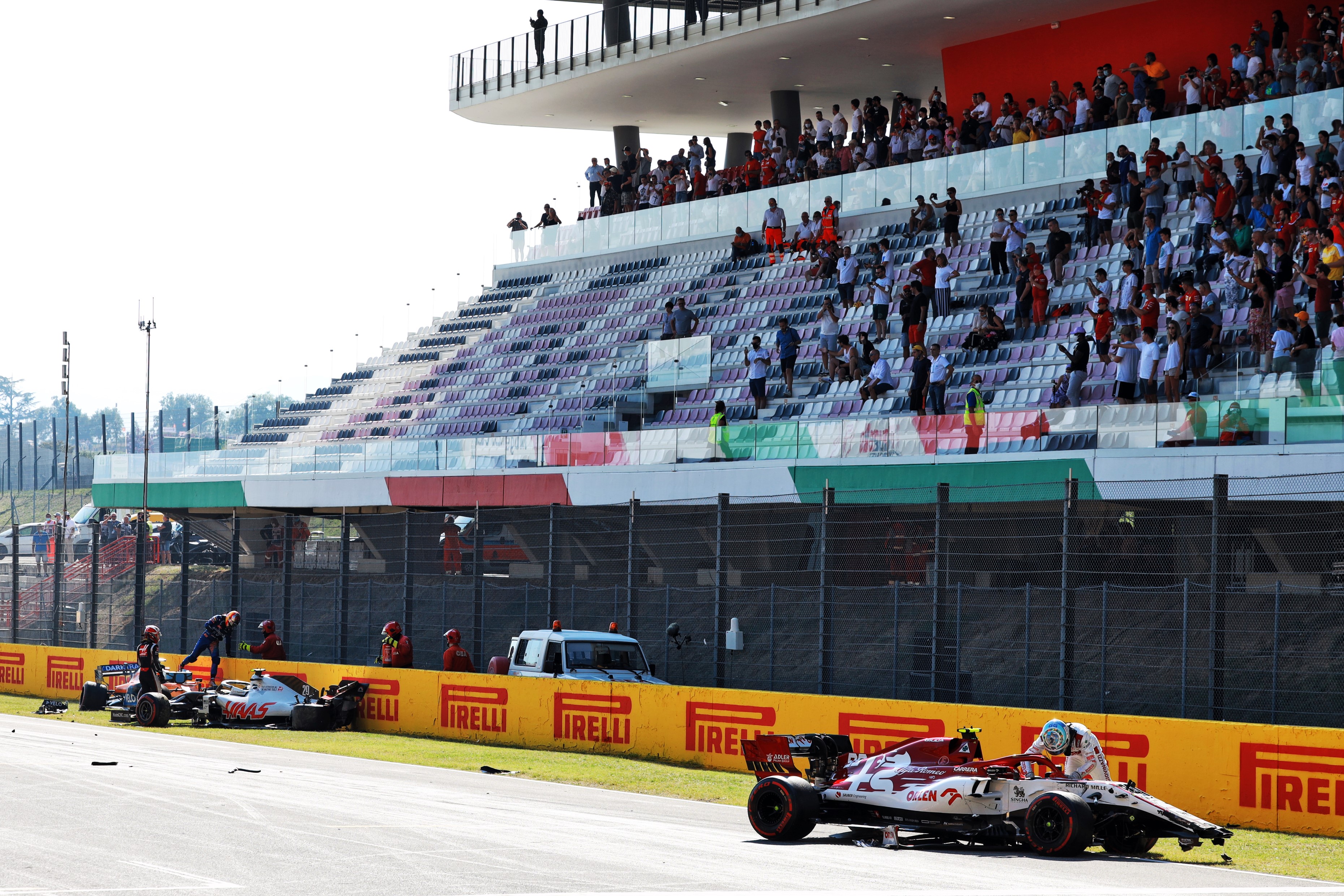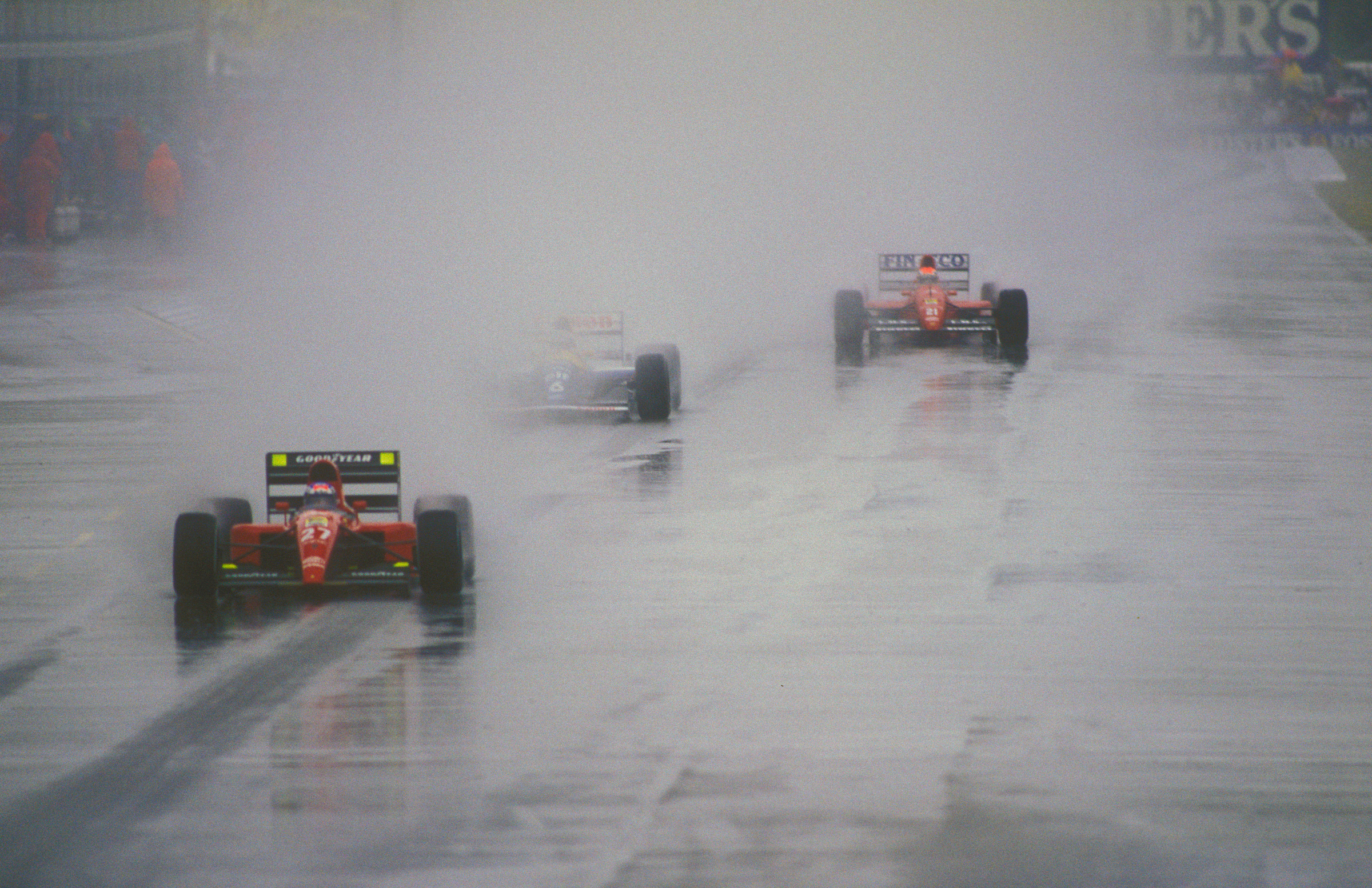Up Next

Red flags were once a rarity in Formula 1, but given the proliferation of race stoppages in recent times it was perhaps only a matter of time before a race like the Australian Grand Prix happened and set a new record for most interruptions with three red flags occurring.
Although the third-ever world championship race was red-flagged in 1950, that was the Indianapolis, a race that, great as it was, was never a genuine part of the season. Discounting the 11 points-paying Indy 500s, there have now been 1071 world championship races and a total of 83 of them have been red-flagged.
Of those, thirteen of them have been in the 2020s, with a total of 17 stoppages given the double-red-flags at Mugello in ’20 and Jeddah last year, on top of the Albert Park triple.

Over time, the threshold for what constitutes a restart has gradually come down as safety has improved. The first ‘proper’ F1 world championship was red-flagged at Mosport Park in 1971 thanks to mist that was making it impossible for marshals to see from one post to another. Even back then, that was a big problem and the race, which had already been delayed by two hours because of a terrible accident in the Formula Ford race that claimed the life of Wayne Kelly, was suspended. The regulations allowed full points to be awarded as 60% race distance had been passed. It was the first of 12 races to be stopped in the 1970s.
Generally, it was rain or a multi-car accident, often early on, that led to stoppages. At a time when it took something like the 1973 British Grand Prix pile-up triggered by Jody Scheckter, or a horrific crash such as Niki Lauda’s at the Nurburgring in ’76 or the one that led to Ronnie Peterson’s death at the start of Monza in ’78, the idea of stopping a race for incidents as comparatively mild as Alex Albon’s crash in Australia would have seemed completely alien.
It wasn’t until Zolder ’81 that there were two red flags in the same race. The first was for the awful accident at the start when Siegfried Stohr hit his Arrows team’s chief mechanic Dave Luckett, with rain causing the second. That was one of 20 races red-flagged in the 1980s, with the ’87 Austrian GP another to be stopped twice thanks to start accidents.
It’s certainly not unusual for red flags to cause controversy. The 1984 Monaco Grand Prix is a classic example, with the race stopped by the clerk of the course Jacky Ickx while Alain Prost led because of rain. Then, no restart was possible because the chequered flag was mistakenly waved. Famously, Toleman driver Ayrton Senna was not far behind Prost, with Tyrrell driver Stefan Bellof also in the mix.
The 1990s featured 20 red-flagged races. Famous among them was what stood as the shortest world championship race for three decades (until Spa ’21) in 1991 at Adelaide. That was stopped and the half-points result was declared based on just 14 laps.

In 1994, there were two infamous race stoppages. The first was as a result of Ayrton Senna’s tragic accident at Imola, with the second at Suzuka thanks to heavy rain early on. Both of those races were restarted and run on an aggregate basis with the times from the two parts of the race combined. Those were the last instances of this happening, which was probably for the best given the confusion it caused with Nigel Mansell incorrectly believing he’d nabbed third place from Jean Alesi with a late pass.
The massive pile-up triggered in 1998 by David Coulthard’s spin on the run out of La Source on the first lap at Spa is another well-known stoppage from this period. There were also red flags in Canada in 1997 for Olivier Panis’s leg-breaking shunt, and at Silverstone in 1999. The latter is often put down to Michael Schumacher’s crash at Stowe, although was actually triggered by two cars – the BAR of Jacques Villeneuve and Alex Zanardi’s Williams, being stuck on the grid.
The first red flag of the 2000s – at the 2000 Monaco Grand Prix – was initially triggered because of a computer glitch, but then almost immediately made necessary by a track-blocking collision between Jenson Button and Pedro de la Rosa. But the first decade of the 21st century was a sparse one for red flags with only six from 2000-2009.
One of the reasons for this was the increased use of the safety car, combined with a push at the start of 2000 to encourage drivers to be less aggressive and not race knowing that if they did cause an accident the race would be stopped and reset. That’s why the 2002 Australian Grand Prix was not stopped after Ralf Schumacher’s airborne accident.
Probably the most celebrated and controversial red flag of that period was at Interlagos in 2003. A countback mistake temporarily led to victory being awarded to McLaren’s Kimi Raikkonen, although it was later handed to Jordan and Giancarlo Fisichella.

In the 2010s, 11 races were red-flagged. But among them were two consecutive races in 2011, the first of those stoppages denying us a grandstand finish. When Vitaly Petrov crashed in the first part of the Swimming Pool at Monaco that year, Sebastian Vettel led on aged rubber with Fernando Alonso and Button chasing in reverse order of tyre preference. The red flag allowed all three to change tyres and neutralised what even at Monaco could have been a dramatic battle. Two weeks later, Button won in Canada with an official race time of 4hr4m39.537s thanks to a lengthy red flag for rain.
The only red-flagged that decade that wasn’t restarted was the tragic 2014 Japanese Grand Prix that was stopped when Jules Bianchi suffered the accident that led to his death the following year.
Red flags have been more frequent in the 2020s, with 13 races stopped so far. The increased frequency is partly down to the misfortune of big crashes, the willingness to stop races for barrier repairs and the desire to ensure green-flag racing is maximised.
But while there is criticism of a certain trigger happiness on the part of the FIA, it’s difficult to argue with many of the decisions. Take the restart pile-up at Mugello, Romain Grosjean’s fireball accident at the start of the 2020 Bahrain Grand Prix or Zhou Guanyu’s barrier-vaulting crash at the start of Silverstone last year.

Still, the passage of time has clearly brought with it plenty of red flag controversy. That applies not just to the recent race in Australia.
At Suzuka last year, drivers were outraged at a slow-moving flatbed truck being on the circuit, while the less said about the farcical ’21 Belgian Grand Prix, with a result declared on a single lap rolling behind the safety car, the better.
There’s no sign of the rate of red flags reducing and, for the most part, that’s a positive given they are used for safety reasons. The risk of punctures and resulting crashes, the potential threat to track workers and the risk of incidents involving recovery vehicles makes this necessary. And like so many safety measures, they always seem over-cautious until the worst happens, at which point everyone demands to know why something wasn’t done to prevent it.
One-fifth of races have been red-flagged in the 2020s. So you can guarantee that the next stoppage, and perhaps the next controversy, isn’t far away.





